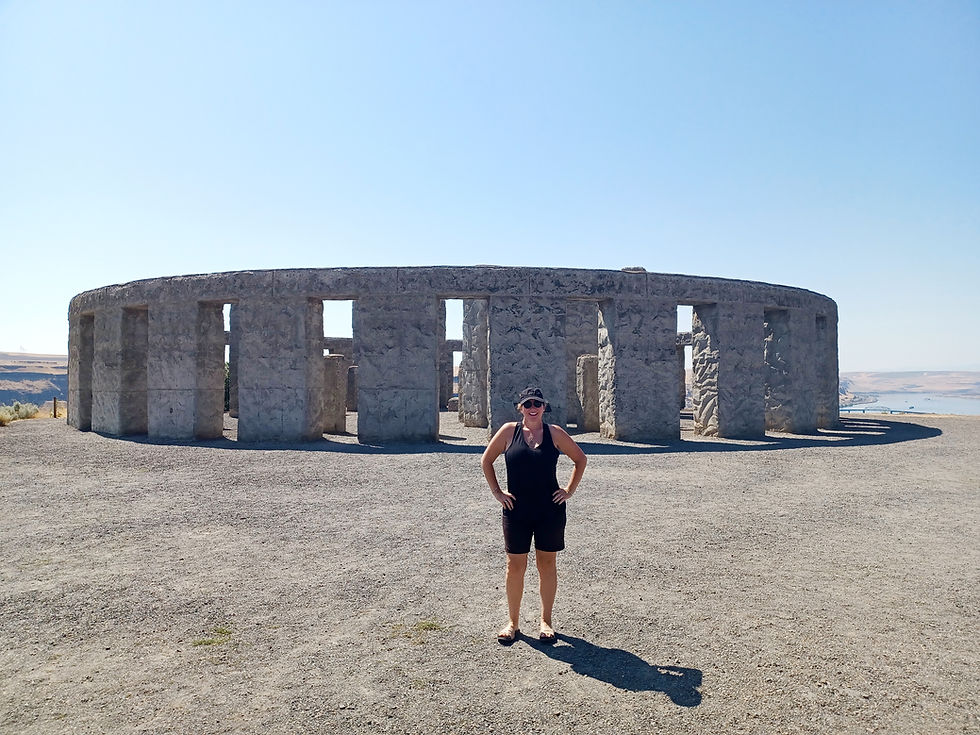Stonehenge Memorial, Washington
- Jacqui Sullivan

- Aug 24, 2022
- 2 min read
Mike and I wanted to visit the Stonehenge Memorial while we were in Washington. The original Stonehenge is an ancient, Neolithic structure situated in the county of Wiltshire, high on Salisbury Plain in England. Its massive stones, broken and fallen from age, have stirred the imagination for centuries. There is nothing quite like this famous prehistoric monument anywhere else in the world.

The original Stonehenge was created based on a solar year of 365.25 days to help people keep track of days, weeks and months. Researchers say it's a giant solar calendar that may link the UK to ancient Egypt. Estimated as being erected in 3100 BC, Stonehenge was already 500-1,000 years old before the first pyramid was built.
Well, Sam Hill visited the Stonehenge as well and wanted to build one on his land. He built a full scale replica of the ancient, Neolithicstructure that's on theSalisbury Plain in England.

Erected as the nation’s first WWI memorial and dedicated in 1918 to the servicemen of Klickitat County, Washington, who died in the service of their country during the Great War, Hill’s Stonehenge Memorial is a monument to heroism and peace.

Guided by leading authorities on archaeology, astronomy, and engineering, Hill combined their knowledge to duplicate, as nearly as possible, the original size and design of the ancient Neolithic ruin in England.

The original idea was to use local stone, however, when the rock proved unsatisfactory, Hill decided to use reinforced concrete. (The rough, hand-hewn looking texture was created by lining the wooden forms with crumpled tin.)

On June 8, 1918 a total eclipse of the sun was predicted, with the best viewing point in the vicinity of Goldendale, Washington. Consequently, some of the best astronomers of the day were in Klickitat County. Professor Campbell, of Lick Observatory at the University of California, agreed to fix the position of the altar stone.

Unlike the ancient Stonehenge, it is aligned to the astronomical horizon rather than the actual midsummer sunrise. This results in a three degree difference from the original structure. Combined with a five degree difference in latitude and the manner in which the surrounding hills obscure the actual horizon, Stonehenge Memorial is difficult to use as an astronomical calendar.

When Sam Hill died in 1931, his body was cremated and the ashes placed in a crypt just below the Stonehenge Memorial. The original crypt deteriorated in the next 25 years and was replaced in 1955 by a granite monument bearing his epitaph: “Samuel Hill: Amid nature’s great unrest, he sought rest.”
My Mom and I got to visit England Stonehenge in 1999.












Comentarios